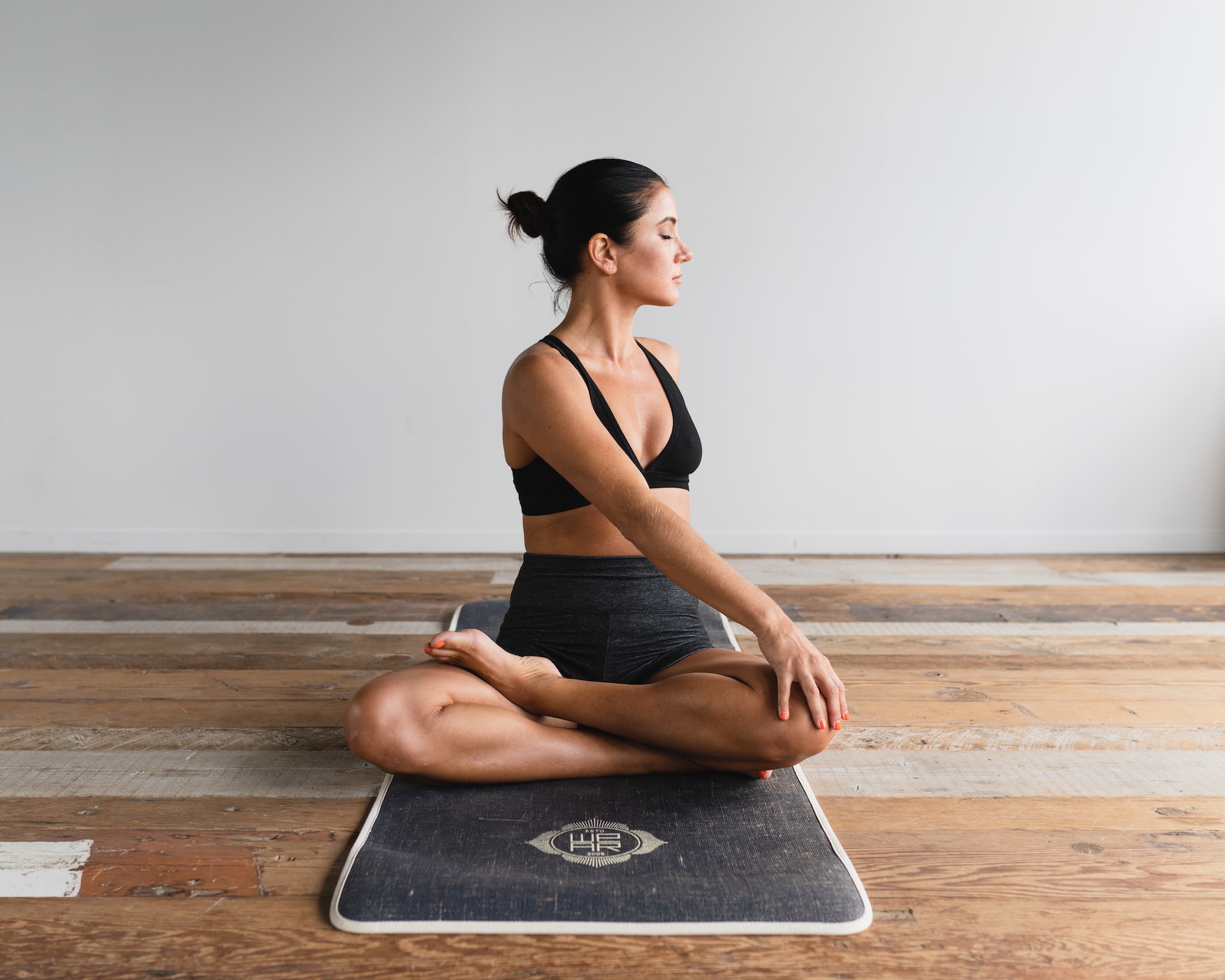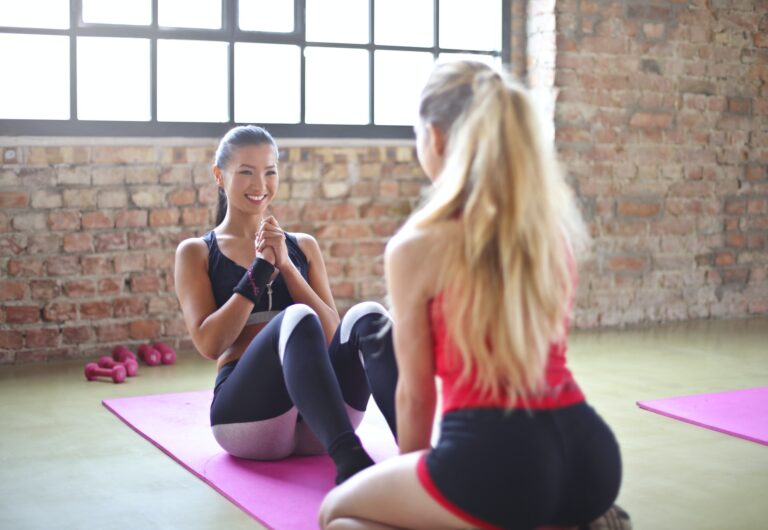Yoga for Stress Relief and Mental Wellness
As an Amazon Associate, I earn from qualifying purchases.
Disclosure: Some of the links in this article may be affiliate links, which can provide compensation to me at no cost to you if you decide to purchase a paid plan. You can read our affiliate disclosure in our privacy policy.
Yoga for Stress Relief is an effective way to reduce stress, increase relaxation, and enhance overall mental well-being. Whether you’re a beginner or an experienced yogi, yoga can help you keep mentally healthy. When practiced regularly, yoga can help us become more attuned to our thoughts and emotions, allowing us to manage stress, anxiety, and depression better.
Yoga can also be an excellent tool for improving physical fitness. It improves our strength, balance, flexibility, and cardiovascular health. Not only does this help our physical fitness goals, but it also reduces stress, releases tension, and helps our bodies relax. All of these things also improve overall mental health. Nervous system activation caused by yoga can also help us better manage our energy levels and focus throughout the day.
1. Introduction to Yoga and Mental Health
It is important to remember that yoga is a form of exercise and should not replace any form of needed medical or professional treatment. It’s beneficial to consult with a physician before beginning any physical activity, especially if you have any pre-existing medical conditions. However, once medically cleared, yoga can be a great option for relieving stress and improving mental health.
-
The connection between yoga and mental wellness
Yoga can be a healing form of self-care, as it provides an opportunity to focus on the body and mind. It is also a great way to develop self-awareness and compassion, which can reduce stress and anxiety. Finally, yoga’s various breathing techniques can help us become more mindful of our breath and how it relates to our mental state.
Overall, yoga is a great way to reduce stress.
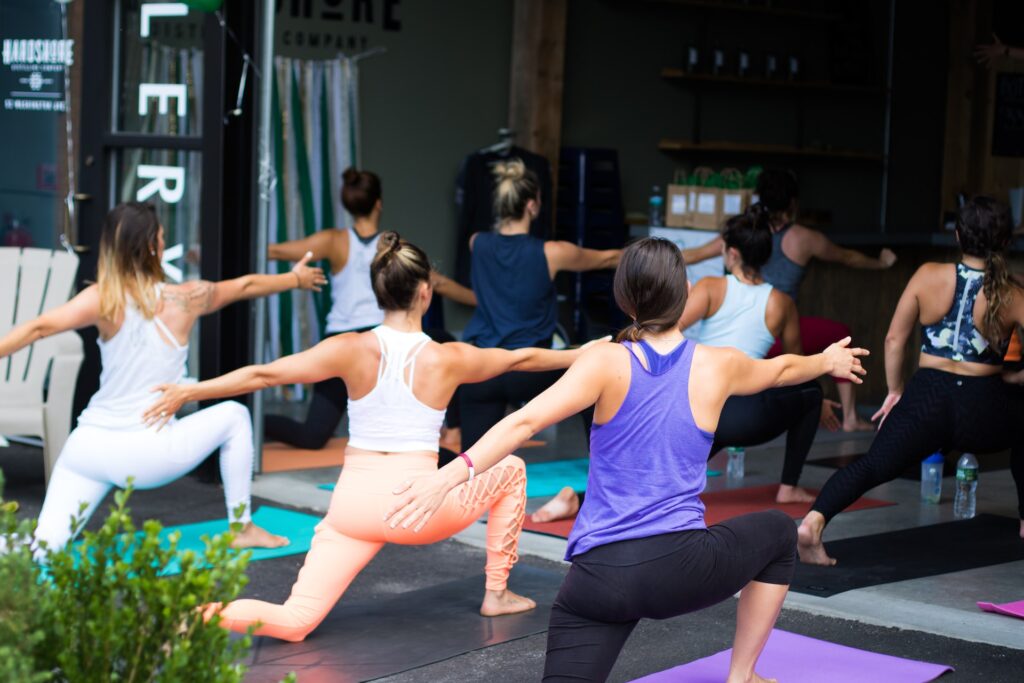
2. Yoga’s Therapeutic Effects
Yoga can also help us develop better posture and improve our physical strength. This can lead to increased mobility and flexibility, which can reduce the risk of injuries, particularly in older populations. Moreover, yoga is also beneficial for improving our respiratory and cardiovascular functions. By learning deep breathing techniques, we can increase oxygen circulation, helping our bodies and minds become relaxed and energized.
Since yoga is gentle and low-impact, it’s suitable for people with any physical limitations. It’s a great way to stay fit and healthy, even if we don’t have access to a gym or fitness equipment. Additionally, yoga can help us get in touch with our inner self and increase our sense of well-being.
-
Enhanced muscular strength and body flexibility
-
Improved respiratory and cardiovascular function
Yoga is an effective way to reduce stress, and improve our physical fitness and mental health. It’s a great practice for all ages, and can be practiced anywhere there is space. With regular practice, yoga can help us become more resilient to stress and develop better mindfulness.
3. Yoga for Stress Management: benefits of yoga
Yoga is also an effective way to help manage stress. Deep breathing and gentle movements work together to help you relax and clear your mind. By replacing thoughts of stress with positive and calming ones, you can help reduce your overall stress levels. Additionally, practicing yoga can help you learn how to change your reaction to stressful situations. You’ll learn techniques such as proper breathing and relaxation exercises to help you stay in control and better manage those stressors.
Mindfulness is an important aspect of yoga. It helps to keep you present and focused while allowing you to acknowledge your thoughts and feelings without judgment. Mindfulness can help you manage your stressful thoughts, leading to better mental health. As you become more aware of the effects of stress, you can start to implement strategies to help reduce and manage your stress.
-
How yoga supports stress management
-
The role of mindfulness in stress relief
By taking a regular yoga class, or even just practicing at home, you can learn how to reduce and manage stress. Yoga can help you become more resilient, while also improving your physical health. This can lead to improved quality of life and greater mental well-being. With regular practice, you can learn how to better manage stress and cultivate a healthier, more mindful lifestyle.
H3: Breathing Techniques for Stress Relief
Breathing techniques are an integral part of yoga practice, and can also be used to help manage stress outside of your yoga class. Simple and effective, these techniques can help to reduce levels of stress and induce a calm, mindful state. Diaphragmatic breathing, or belly breathing, is one of the most popular breathing techniques. This involves breathing deeply using your diaphragm and taking a few minutes to focus on your breath. Try to make your inhales and exhales of a similar length, and take as many breaths as needed to help you relax.
Alternatively, try yoga breathing or pranayama. Yoga breathing consists of a series of slow, deep breaths to help clear your mind and bring your awareness to the present. This breathing technique helps to bring a sense of calm, while also deepening your yoga practice. Pranayama, on the other hand, uses breath sequencing and holds to work on the flow of energy within the body. Pranayama can help to bring balance to the body as well as a focused state of mind.
-
Importance of breath in yoga
-
Simple breathing exercises to try
These breathing exercises can be done as part of your yoga practice or on their own. Make sure to find a comfortable, quiet place to practice, and focus on breathing slowly and deeply. This will help to relax the body, slow down your heart rate, and reduce stress.
In addition to breathing exercises, yoga can help to reduce stress in many other ways. Regular yoga practice can.
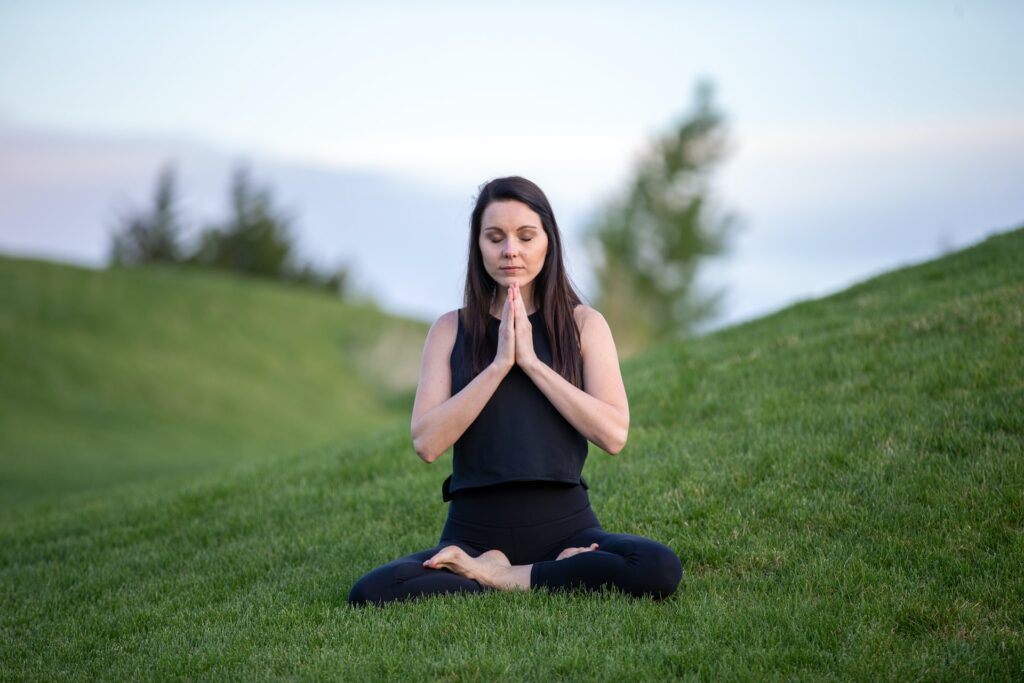
4. Mental Clarity and Calmness: stress relief
Yoga helps to improve mental clarity by calming the mind and body, allowing for greater focus and concentration. As the practice connects the physical movements of yoga with your breath, you’ll naturally become more aware of your body. This awareness can help you to recognize how to better process your emotions, building emotional intelligence and resilience.
When feeling overwhelmed and anxious, yoga can be used as a form of meditation, helping to bring focus and clarity to the moment. Regular practice can also teach you to be more mindful of your thoughts, curbing negative thoughts.
There are also several yoga poses and sequences that focus on promoting calmness and relaxation. Restorative poses, like Child’s Pose or Corpse Pose, help to slow down active thinking and release tension. Gentle poses, like Cat-Cow, are also known to help relax the body and reduce stress. Practices such as Yoga Nidra, which involves deep relaxation while lying down, can also be hugely beneficial.
-
Yoga’s impact on mental clarity
-
Techniques to promote calmness
The combination of physical practice, breath work, and mindfulness techniques can also help to reduce stress and create an overall sense of calmness and balance. So if you’re feeling overwhelmed, take a few moments for yourself and practice some yoga. You’ll be surprised at the results.
5. Yoga Poses for Stress and Anxiety Relief
Yoga is an ancient practice that combines physical postures, breathwork, and meditation to help improve overall health and well-being. For those dealing with stress, anxiety, and other mental health issues, it can be a valuable tool. Yoga poses specifically designed to reduce stress and promote relaxation can help to ease mental tension and promote a sense of calmness and clarity.
-
Recommended poses for relieving stress
-
Tips for incorporating these poses into your routine
One popular yoga pose for reducing stress is the Child’s Pose. This pose helps to slow down active thinking and relax the body. It can be used as a form of meditation, allowing for greater awareness and focus. Other poses for stress relief include the Cat-Cow Pose, which increases circulation and stretches the neck and spine, and Corpse Pose, which is a restorative pose that can be used to relax the body and mind.
Yoga Nidra, “yogic sleep”, is another popular stress-relieving tool. This practice involves deep relaxation while lying down, promoting a sense of peace and calmness. Other breathing techniques, such as Pranayama, are also often used to reduce stress and promote relaxation.
H3: Beginner-Friendly Yoga Poses
If you’re new to the practice of yoga, the poses can seem intimidating and overwhelming. However, there are plenty of poses that are tailored for beginners, even those with limited flexibility. Chair Yoga, for instance, is a form of yoga that can be done while sitting in a chair. It’s great for those with limited mobility, as well as seniors and people with injury or chronic pain.
The Tree Pose, or Vrksasana, is an excellent beginner pose for focus, balance, and stability. It can be modified to suit different levels, making it accessible to all. The Warrior Pose (Virabhadrasana) is also a great beginner-friendly pose that helps to build strength, flexibility, and core stability.
-
Accessible poses for beginners
-
Modifications for different skill levels
Yoga is a form of self-care that can help to reduce stress and boost mental clarity. Incorporating these stress-relief poses into your practice can help to create an overall sense of calmness and focus. Whether you’re a seasoned yogi or looking to get started, explore the various poses and find the ones that work for you. With a little practice and dedication, you’ll soon feel the benefits of these soothing poses.
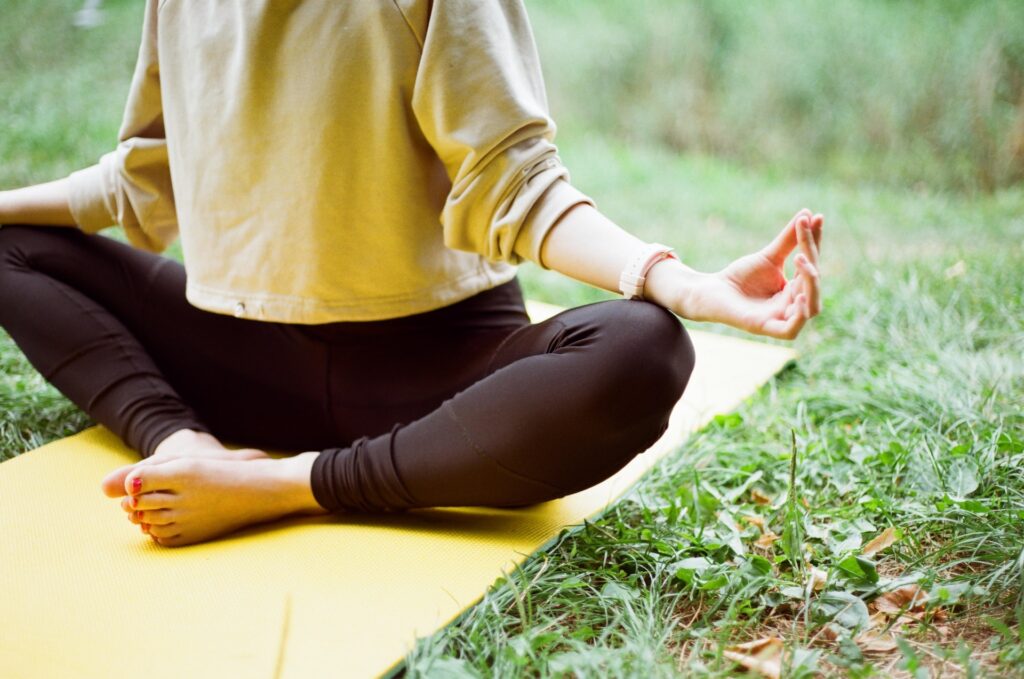
6. Meditation and Yoga
Meditation is an important part of any yoga practice, and it can be used as a powerful tool for stress relief. This practice helps to cultivate mindfulness, allowing us to become aware of our thoughts, feelings, and sensations, while in a state of relaxation. Focusing on the breath is a great way to start, as this helps to connect body and mind, and to clear the mind of any distracting thoughts.
-
The role of meditation in yoga practice
-
Meditation techniques for stress relief
Mindful walking is another great way to relax and reset. This practice involves moving slowly and focusing on the sensations of each step while focusing on the breath. The goal is to become mindful of the present moment and to tune out any distracting thoughts. It’s also a great way to get a dose of fresh air and to destress during a busy day.
7. Yoga’s Impact on Healthy Eating
Yoga can have a positive impact on our eating habits. Instead of relying solely on self-control and willpower, yoga encourages mindful eating, which is the practice of being fully aware of the food we eat, both physically and mentally. It involves being aware of our body’s hunger cues and learning to identify when we’re truly hungry, why we’re eating, and how to be aware of our body’s signs of being full. Incorporating mindful eating habits into our yoga practice can help to break negative cycles of overeating and mindless snacking.
-
The connection between yoga and mindful eating
-
Tips for incorporating healthy eating habits
One way to get started is to pay attention to how you feel physically. Before reaching for a snack, take a few moments to assess your level of hunger on a scale of one to ten. Another way to incorporate mindful eating is to slow down while you eat. This can be done by savoring each bite, enjoying the flavor, texture, and smell of the food, and paying attention to the body’s signals as it moves through the digestive process.
Finally, practice tuning into your body’s response to different foods. The goal of this is not to be restrictive but rather to make mindful decisions that are best for you. With regular practice of mindful eating, you’ll soon be able to make healthier food choices, reduce stress, and increase feelings of wellness.
8. Yoga and Progressive Muscle Relaxation
Continue writing in a conversational and friendly tone. SEO optimized using the most relevant important topics included in the top 10 search results on Google in 50 words
Yoga and progressive muscle relaxation are a powerful combination for reducing stress and anxiety. This approach involves tensing and relaxing muscle groups in a systematic way, from the head and neck to the feet, while focusing on breathing deeply. In addition to relieving tension, this practice increases awareness of your body and helps increase mindfulness. It can also provide a sense of emotional balance and peace.
-
Combining yoga with progressive muscle relaxation
-
Benefits of this approach to stress relief
The benefits of this type of stress relief are numerous, from reducing tension headaches to improving sleep quality. It can also help reduce feelings of depression and anxiety by providing an effective coping mechanism and an escape from the pressures of everyday life. Incorporating mindfulness through yoga and progressive relaxation can help to reduce stress and improve overall well-being.
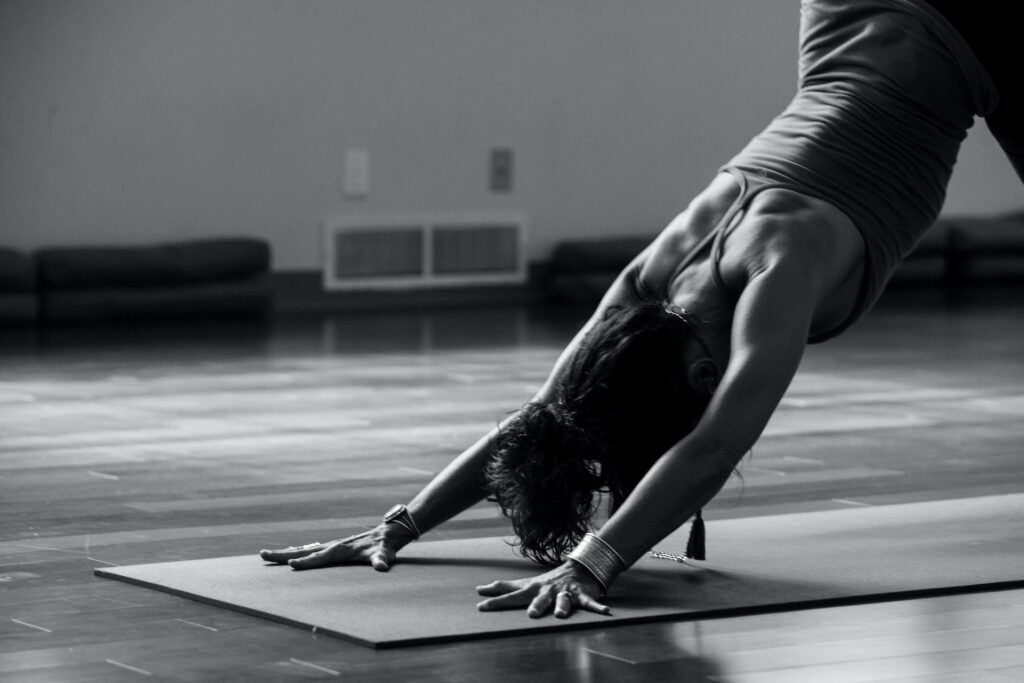
9. Yoga and Music Therapy
Yoga and music therapy are two powerful tools used to reduce stress and anxiety. Through the combination of movement, breathwork, and meditation combined with music, this approach can provide a safe and calming environment to reduce tension and stress. Using music tailored to the individual, the listener is able to create a space to relax and focus.
-
The role of music in yoga practice
-
Music genres that complement yoga for stress relief
Music can be used to enhance yoga poses and breathing exercises. Slow-tempo and instrumental music paired with gentle practice can provide a safe and calming environment to reduce tension and stress. Certain genres such as classical, New Age and World music are often used for yoga and music therapy as they can create a sense of calm and relaxation. Music therapy can also be used to help increase mindfulness and reduce mental chatter.
10. Yoga and Body Awareness: practice yoga
Yoga is an ancient practice that is not only beneficial for physical health and fitness but for mental well-being as well. Incorporating increased body awareness into one’s yoga practice can help cultivate mindfulness and create a sense of inner peace. Through regular practice, one can experience an increased sense of relaxation, better coordination, and an improved sense of self.
-
How yoga increases body awareness
-
Benefits of heightened body awareness
Benefits of increased body awareness in yoga include improved posture and balance, an improved sense of body image, and a better body-mind connection. Being mindful of one’s body can also lead to improved breathing, which can ultimately reduce stress levels. Increased body awareness can even help to identify changes in the body that can be warning signs of illness or injury. Practicing yoga with awareness of the body can help to create a greater sense of overall well-being.
11. Integrating Yoga into Your Daily Routine
Creating a consistent yoga practice can work wonders for your body and mind. To make yoga an integral part of your daily routine, start with these helpful tips:
-
Set a specific time: Choose a consistent time each day—even if it’s just 15 minutes—to dedicate to your practice.
-
Create a dedicated space: Designate a comfortable, clutter-free area in your home for your yoga sessions.
-
Find your style: Experiment with various yoga styles to discover which one resonates with you and keeps you engaged.
-
Set realistic goals: Be patient with yourself and establish achievable goals to help maintain motivation.
-
Use online resources: Leverage yoga apps, videos, and online classes to learn new poses and techniques.
-
Build a support system: Connect with fellow yogis, either in-person or online, to keep each other motivated and accountable.
-
Tips for creating a consistent yoga practice
-
Strategies for maintaining motivation
By using these strategies, you’ll create a consistent yoga practice and experience the wonderful benefits of this age-old discipline.
12. Conclusion
In conclusion, yoga offers countless benefits for stress relief and mental wellness. By integrating meditation and various yoga techniques into your daily routine, you’ll experience inner peace, increased focus, and a greater sense of overall well-being. If you haven’t already, we encourage you to explore yoga as a powerful stress-relief practice. There’s no better time than now to embark on this transformative journey and discover the profound impact yoga can have on your life!
FAQ
What are the best yoga poses for stress relief and mental wellness?
The best yoga poses for stress relief and mental wellness include Child’s Pose, Cat-Cow, Downward-Facing Dog, Legs-Up-The-Wall, and Corpse Pose. These calming poses help you relax and foster inner peace.
How often should I practice yoga to experience its stress-relief benefits?
To experience stress-relief benefits, practice yoga consistently, ideally 3 to 5 times per week. However, even shorter sessions or less frequent practice can still provide positive effects on stress levels and mental well-being.
Can beginners use yoga for stress relief and mental wellness?
Yes, beginners can use yoga for stress relief and mental wellness. Start with gentle poses and gradually progress to more advanced ones, ensuring your practice is safe and enjoyable.
Are there specific yoga styles that focus on stress relief and mental well-being?
Specific yoga styles that focus on stress relief and mental well-being include Restorative Yoga, Yin Yoga, and Hatha Yoga. These styles emphasize mindfulness, deep breathing, and slower-paced movements.
How does incorporating meditation into yoga enhance its stress-relieving effects?
Incorporating meditation into yoga enhances stress-relieving effects by promoting relaxation, mindfulness, and greater self-awareness. This powerful combination helps you cultivate inner peace and combat stress more effectively.

